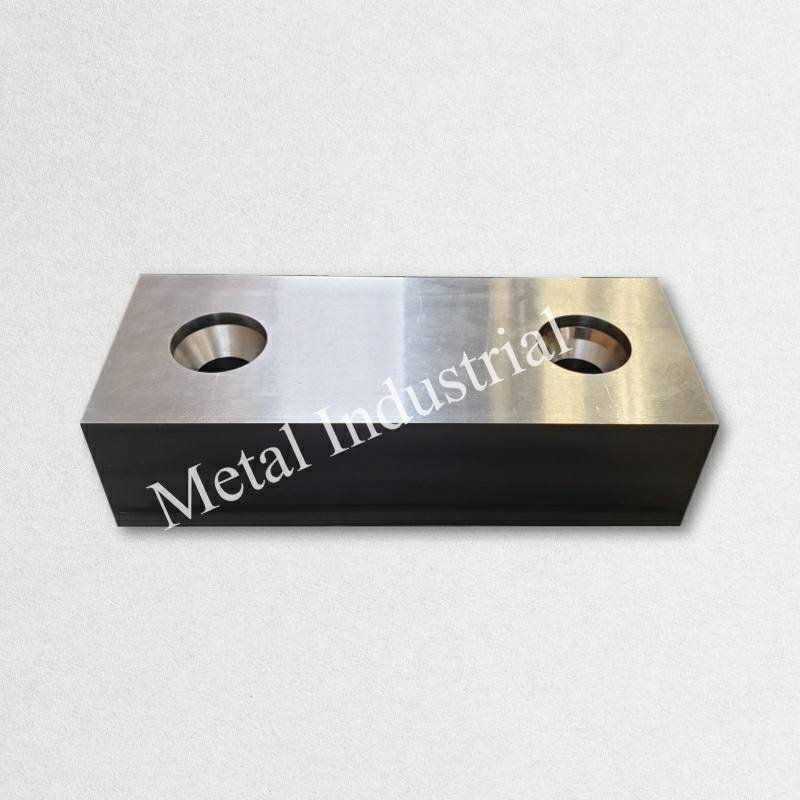
Правильный уход за лезвия для резки металлолома Обеспечивает эффективную работу вашего оборудования. Регулярное обслуживание лезвий сокращает время простоя и обеспечивает более плавную резку. Уход за лезвиями экономит деньги, продлевая их срок службы и предотвращая внезапные поломки, обеспечивая безопасность вашей команды.
Ключевые выводы
- Ежедневно проверяйте лезвия ваших ножниц для резки металлолома на наличие трещин, сколов и затупления. Это поможет вам своевременно обнаружить проблемы и обеспечит безопасность вашего оборудования.
- Чистите и смазывайте лезвия после использования. Это предотвращает появление ржавчины, уменьшает износ и способствует более плавной и точной резке.
- Регулярно регулируйте зазор лезвий, силу резания и выравнивание. Это поможет добиться чистого реза и продлит срок службы лезвий.
- Затачивайте лезвия аккуратно, используя правильные инструменты и способы. Это предотвратит повреждение и обеспечит лезвиям хорошую резку.
- Используйте средства индивидуальной защиты при работе с лезвиями и храните их в сухом, прохладном месте. Это поможет предотвратить травмы и появление ржавчины.
- Немедленно меняйте лезвия, если заметите трещины, чрезмерный износ, глубокие порезы или странные звуки. Это поможет предотвратить несчастные случаи и обеспечит безопасность вашей машины.
- Подумайте об использовании специальных лезвий для особых задач. Это поможет вам получать более качественные пропилы, меньше отходов и со временем сэкономить деньги.
- Используйте контрольный список для ежедневного и еженедельного обслуживания. Это поможет вам организовать работу, предотвратить несчастные случаи и поддерживать ножницы по металлу в рабочем состоянии.
Основы работы с ножницами
Что такое лезвия ножниц Scrap Metal?
Ножи для резки металлолома используются в станках для резки металла. Эти ножи очень важны при переработке отходов и металлообработке. При использовании ножниц по металлу лезвие с большой силой разрезает металлические листы, балки или трубы. Большинство ножей изготовлены из быстрорежущая сталь, легированная сталь D2 или карбид вольфрама. Эти материалы делают лезвие прочным и надежным для тяжелых работ.
Лезвия ножниц Metal проходят термическую обработку для повышения прочности и увеличения срока службы. Это помогает лезвию сохранять остроту после многочисленных резов. Эти лезвия используются в различных пресс-ножницах, таких как ножницы с боковым прессованием, портальные и наклонные. Каждый станок использует лезвие в соответствии с размером и формой металлолома.
Конструкция лезвия и термообработка обеспечивают чистые и точные пропилы. Уход за лезвием позволит уменьшить количество отходов и получить более гладкие кромки. Форма лезвия, материал и регулярный уход помогут вам добиться наилучших результатов в ваших проектах по металлообработке.
Распространенные проблемы
Вы можете столкнуться с некоторыми проблемами Ножи для Резки Металла При их использовании. Эти проблемы могут усугубить порезы и сделать их небезопасными. Вот некоторые распространённые проблемы:
- Сколы: Небольшие фрагменты могут отколоться от лезвия. Это происходит, если используется лезвие из неправильного материала, применяется слишком большое усилие или режется очень твёрдый металл. Сколы могут привести к образованию шероховатостей и заусенцев на разрезаемом металле.
- Несоосность: Если лезвие установлено неправильно, рез может быть неровным, появятся заусенцы или странные звуки. Неправильное расположение лезвий может привести к образованию зазубрин или скосов на краях, а также к получению деталей неправильного размера.
- Трещины: Трещины могут появиться на лезвии из-за напряжения или плохой термообработки. Трещины ослабляют лезвие и могут привести к его внезапной поломке.
- Тупость: Со временем лезвие становится менее острым. Тупое лезвие затрудняет резку металла и может оставлять грубые или необработанные края.
- Заусенцы и размерные ошибки: Тупость или несоосность могут привести к появлению заусенцев — небольших грубых выступов на кромке реза. Вы также можете заметить детали неправильного размера.
Регулярная проверка лезвий и правильная термическая обработка помогут предотвратить эти проблемы. Если вы обнаружите проблему на ранней стадии, вы сможете устранить её до того, как она усугубится или станет опасной.
Зная, как работают ножи для ножниц по металлу и на какие проблемы следует обращать внимание, вы сможете поддерживать свои машины в рабочем состоянии. Правильный уход и термическая обработка помогут вашим ножам прослужить дольше и работать лучше.
Важность поддержания ножниц

Почему так важно техническое обслуживание
Вы помогаете поддерживать ножи для резки металлолома в рабочем состоянии. Регулярное обслуживание продлевает срок службы ножей. Это также способствует более эффективной работе вашего станка. Если вы заботитесь о ножах, они реже ломаются. Это означает, что вы устраняете меньше проблем и выполняете больше работы.
Уход за лезвиями также обеспечивает безопасность людей. Острые лезвия режут металл чисто и не застревают. Вы и ваша команда в большей безопасности, если соблюдаете все правила. Оборудование оснащено системами безопасности, но они работают лучше всего, если вы поддерживаете всё в хорошем состоянии.
Регулярное обслуживание также экономит ваши деньги. Острые и ровные лезвия реже требуют замены. Вы также избегаете дорогостоящего ремонта. Проверка лезвий часто помогает обнаружить небольшие проблемы на ранней стадии.
Совет: проверяйте лезвия каждый день. Чистите их после использования и осматривайте на наличие повреждений. Эта простая привычка может предотвратить большинство проблем.
Риски пренебрежения
Пропуск технического обслуживания подвергает опасности людей и оборудование. Проблемы могут быстро усугубиться и привести к серьёзным последствиям. Вот некоторые риски, связанные с ненадлежащим уходом за лезвиями:
- Вы можете получить порезаться или пораниться, если прикоснуться к тупым или сломанным лезвиям.
- Если вы не наденете защитные очки, куски металла могут отлететь и попасть вам в глаза или лицо.
- Если вы не наденете перчатки или длинные рукава, вы можете порезаться при замене или чистке лезвий.
- Незнание того, как пользоваться машиной, повышает вероятность несчастных случаев.
- Если лезвия не закреплены плотно, они могут соскользнуть и стать причиной внезапных несчастных случаев.
| Категория риска | Описание | Влияние на безопасность и эксплуатацию |
|---|---|---|
| Воздействие движущихся машин | Работа вблизи работающих машин повышает риск травматизма во время ремонта. | Может произойти больше аварий, и люди могут пострадать. |
| Аварийный ремонт против профилактического обслуживания | Аварийный ремонт проводится в небезопасных местах, но плановое техническое обслуживание безопаснее. | Плановое техническое обслуживание снижает риски и экономит время. |
| Катастрофический отказ оборудования | Лезвия, за которыми не ухаживают, могут внезапно сломаться. | Это может нанести вред людям, остановить работу и сломать машины. |
| Операционная неэффективность | Старые или ослабленные лезвия могут заклинить и сделать рез некачественным. | Вы тратите время и деньги на устранение этих проблем. |
| Факторы дизайна и обучения | Простые в использовании машины и обученные рабочие более безопасны. | Люди меньше времени подвергаются опасности и совершают меньше ошибок. |
| Время, затрачиваемое на задачи по техническому обслуживанию | Ремонт вещей часто означает необходимость проводить больше времени в небезопасных зонах. | Больше времени уделяется опасностям и меньше работы. |
Пропуск технического обслуживания вредит не только вашему станку. Он может навредить вам и вашим коллегам. Аварийный ремонт опаснее планового. Вы потеряете время и деньги, если ваш станок сломается или будет резать некачественно.
Примечание: Всегда соблюдайте правила технического обслуживания, рекомендованные производителем. Используйте правильные инструменты и средства индивидуальной защиты для обеспечения безопасности.
Инспекция лома лезвий ножниц Metal
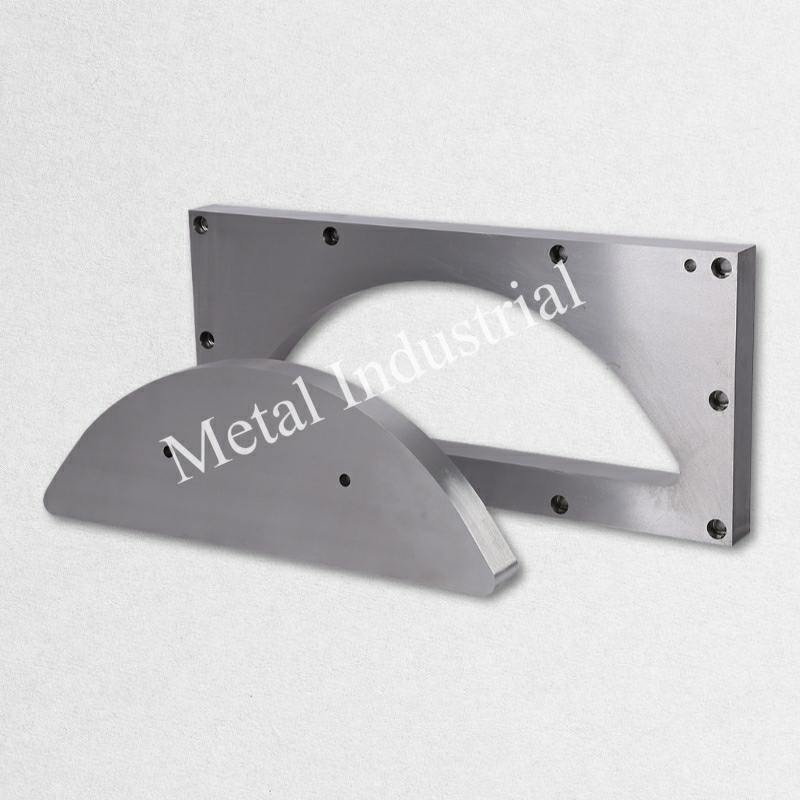
Чтобы лезвия ваших ножниц по металлу работали исправно, необходимо регулярно их проверять. Раннее выявление проблем поможет предотвратить более серьёзные проблемы в будущем. В этой части вы узнаете, как осмотреть лезвия, измерить степень их износа и понять, как повреждения могут повлиять на их работу.
Визуальные проверки
Пошаговый процесс проверки
Проверяйте лезвия каждый день. Вот шаги, которые необходимо выполнить после использования машины: 1. Выключите машину и убедитесь, что она выключена во время проверки. 2. Протрите лезвие мягкой тканью, чтобы удалить пыль, металлические частицы и масло. 3. Внимательно осмотрите кромку и поверхность лезвия. При необходимости используйте фонарик. 4. Осмотрите режущую кромку на наличие трещин, сколов или отсутствующих деталей. 5. Проверьте наличие ржавчины или пятен, похожих на коррозию. 6. Убедитесь, что все болты и крепёжные элементы затянуты и не ослаблены. 7. По возможности поверните или подвигайте лезвие, чтобы осмотреть его со всех сторон. 8. Прислушайтесь к посторонним звукам или вибрациям во время работы машины, так как это может указывать на скрытые повреждения.
Совет: Возьмите за правило регулярно проверять состояние лезвий. Это поможет вам обнаружить мелкие проблемы, прежде чем они перерастут в серьёзные.
Распространенные типы визуальных повреждений
Осмотрев свой клинок, вы можете заметить различные виды повреждений. Вот наиболее распространённые из них: Трещины: Тонкие линии поперек лезвия. Трещины могут разрастись и привести к поломке лезвия. – Чипсы: Небольшие фрагменты, отколовшиеся от края. Сколы делают резы грубыми и неровными. – Коррозия: Ржавчина или выбоины на поверхности лезвия. Коррозия ослабляет лезвие и сокращает срок его службы. Тупость: Лезвие выглядит закруглённым или изношенным. Тупые лезвия требуют большего усилия и оставляют грубые срезы. – Изогнутые или деформированные области: Лезвие неровное. Деформация приводит к неровному резанию и повышенному износу.
Эти проблемы следует устранять немедленно. Если их игнорировать, можно получить серьёзные порезы, сломать машину или даже получить травму.
Измерение износа
Инструменты для измерения износа лезвий
Чтобы проверить степень износа лезвия, вам понадобятся специальные инструменты. Наиболее распространённые из них: Щупы: Тонкие полоски металла для проверки зазора между лезвием и машиной. – Микрометры: Инструменты, измеряющие толщину кромки лезвия. – Штангенциркули: Инструменты, измеряющие ширину и глубину лезвия. – Шаблоны производителя: Руководства по сравнению формы вашего лезвия с оригиналом.
Эти инструменты помогут вам узнать, исправно ли ваше лезвие или его необходимо заменить.
Как измерить допуски
Чтобы рез был чистым и безопасным, необходимо проверять допуски лезвия. Вот как это сделать: 1. Используйте щуп для проверки зазора между лезвием и неподвижной частью. 2. Сравните полученные значения с руководством по эксплуатации станка или рекомендациями производителя лезвия. 3. Используйте микрометр или штангенциркуль для проверки толщины лезвия в нескольких местах, чтобы выявить неравномерный износ. 4. Приложите шаблон производителя к лезвию, чтобы проверить, соответствует ли его форма оригиналу.
Если цифры показывают, что лезвие слишком тонкое или зазор слишком большой, возможно, вам придется отремонтировать или заменить лезвие.
Когда следует заменять лезвия на основе измерений
Вам следует приобрести новое лезвие, если: – Толщина меньше безопасной, указанной производителем. – Зазор слишком большой, и рез получается некачественным. – Форма лезвия не соответствует шаблону. – Вы затачивали лезвие так часто, что оно больше не является безопасным.
Примечание: частая проверка лезвий и их правильное измерение помогут предотвратить внезапные проблемы и обеспечат бесперебойную работу машины.
Выявление повреждений
Типы повреждений лезвия
При осмотре лезвий можно обнаружить множество видов повреждений. Наиболее серьёзные из них: Трещины: Сначала они маленькие, но могут быстро разрастись. Трещины часто появляются после резки очень твёрдых материалов или при частом использовании лезвия. – Чипсы: Это происходит, если лезвие ударяется обо что-то слишком твердое или недостаточно острое. – Деформация: Лезвие деформируется, обычно из-за перегрева или неравномерного давления. – Коррозия: Ржавчина разъедает лезвие, делая его слабым и легко ломающимся. – Чрезмерный износ: После частого использования край становится слишком тонким или круглым.
Влияние повреждений на производительность
Каждый тип повреждений меняет работу вашего клинка:
| Тип повреждения | Влияние на производительность | Риск безопасности |
|---|---|---|
| Трещины | Может привести к внезапной поломке лезвия. | Высокий |
| Чипсы | Делайте разрезы грубыми и неровными. | Середина |
| Деформация | Делает разрезы неровными и неровными | Середина |
| Коррозия | Делает лезвие слабым и не долговечным. | Середина |
| Чрезмерный износ | Порезы нехороши, заторы случаются чаще | Высокий |
Если не устранить эти проблемы, вы можете сломать станок и подвергнуть себя опасности. Повреждённые лезвия могут сломаться во время работы, разбрасывая металлические частицы или вызывая быструю остановку станка. Некачественная резка также приводит к перерасходу материала и увеличивает объём работы.
Всегда сразу же чините или меняйте повреждённые лезвия. Это обеспечит вашу безопасность и бесперебойную работу машины.
Чистка и смазка
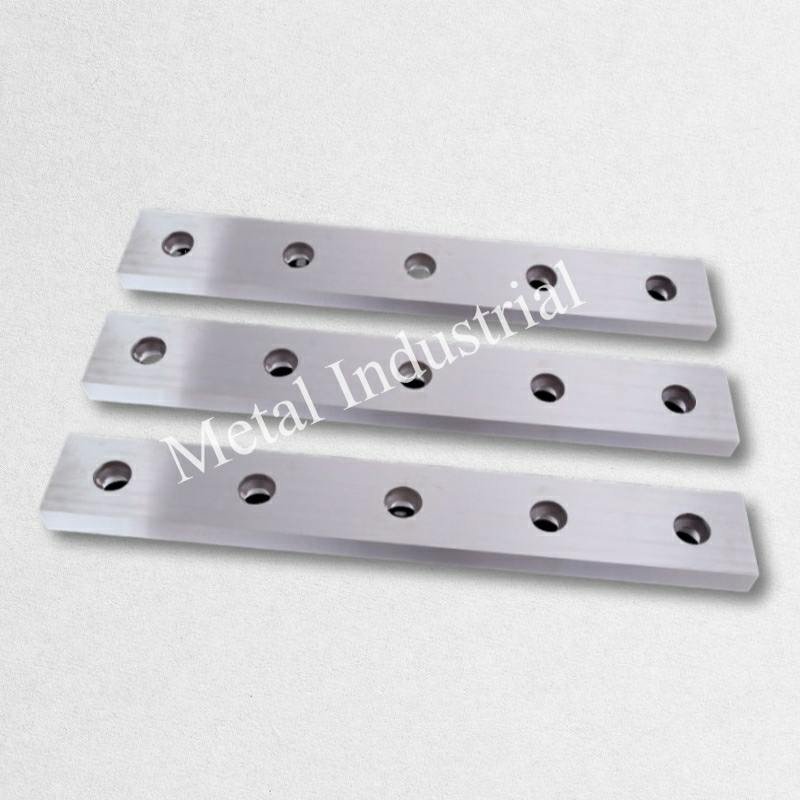
Уход за лезвиями ножниц по металлу начинается с очистки и смазки. Эти меры помогут предотвратить преждевременный износ и обеспечить плавность реза. Они также продлят срок службы вашего оборудования. Ежедневная очистка и смазка лезвий помогут избежать большинства проблем. Использование правильных средств важно для достижения наилучших результатов.
Очистка лезвий ножниц Metal
Процедура ежедневной уборки
Очищайте лезвия ножниц по металлу после каждого использования. Это позволит удалить пыль, металлические частицы и масло, которые могут возникнуть при резке. Вот как это следует делать: 1. Выключите машину и убедитесь, что она выключена. 2. Протрите лезвие мягкой сухой тканью, чтобы удалить свободную грязь. 3. Если на нём есть липкие или трудноудаляемые загрязнения, используйте абразивную губку и безопасное чистящее средство. 4. Внимательно осмотрите кромку лезвия и место его соприкосновения с машиной. 5. Вытрите лезвие чистым полотенцем, чтобы оно не заржавело. 6. Во время чистки проверяйте лезвие на наличие сколов, трещин и тусклых пятен.
Совет: Ежедневная чистка лезвий помогает поддерживать их остроту. Это также помогает своевременно обнаружить повреждения. Эта привычка продлевает срок службы лезвий и предотвращает внезапные поломки.
Рекомендуемые чистящие средства
Правильный выбор чистящего средства обеспечит безопасность лезвий ваших ножниц по металлу. Вот несколько хороших вариантов:
- Изопропиловый спирт: Удаляет масло и грязь, но не повреждает лезвие.
- Мягкие растворители: Специальные очистители лезвий удаляют стойкие загрязнения, но не повреждают металл.
- Спреи для очистки лезвий: Эти спреи предназначены для машин и быстро высыхают.
Не используйте едкие химикаты или грубые чистящие средства. Они могут поцарапать или ослабить лезвие. Всегда читайте и соблюдайте инструкции производителя любого чистящего средства.
Лучшие практики смазки
Рекомендации по частоте смазки
Смазка так же важна, как и чистка. Смазывайте лезвия и подвижные части ножниц по металлу. Это снижает трение и нагрев. Это способствует бесперебойной работе машины и предотвращает преждевременный износ.
- Если вы часто пользуетесь машиной, смазывайте лезвия и детали после каждой смены.
- Если пользуетесь иногда, смазывайте хотя бы раз в неделю.
- Если вы пользуетесь им редко, проверяйте и смазывайте его каждый месяц.
Регулярная смазка продлит срок службы лезвий и сэкономит деньги на ремонте. Всегда проверяйте руководство пользователя вашей машины на наличие специальных рекомендаций.
Типы смазочных материалов и их плюсы и минусы
Вы можете выбрать различные масла для лезвий ножниц по металлу. У каждого вида есть свои плюсы и минусы:
| Тип смазки | Плюсы | Минусы |
|---|---|---|
| Минеральное масло | Легко получить, недорого, подходит для большинства работ | Может собирать пыль, может потребоваться больше масла |
| Синтетическое масло | Выдерживает тепло, служит дольше, не разрушается быстро | Стоит дороже |
| Биосинтетическое масло | Благотворно влияет на землю, продлевает срок службы лезвий, хорошо охлаждает. | Стоит дороже, может быть трудно найти |
| Сухие смазки | Не собирает пыль, подходит для чистых помещений. | Может не обеспечивать хорошую защиту при частом использовании |
Некоторые магазины используют биоразлагаемые масла, такие как B-Lub и Cut Bio 1000Они защищают лезвия, хорошо охлаждают и не вредят окружающей среде. Вы также можете использовать полусинтетические или микроэмульсионные жидкости как для охлаждения, так и для смазки. Всегда используйте масло, подходящее для вашей машины, и следуйте рекомендациям производителя.
Примечание: использование правильного масла и соблюдение графика поможет вашей системе работать исправно и сохранит лезвия в хорошем состоянии.
Предотвращение ржавчины
Рекомендации по среде хранения
Правильное хранение лезвий предотвращает появление ржавчины. Следите за тем, чтобы воздух в мастерской был сухим, а влажность — контролируемой. Вот несколько советов:
- Поддерживайте сухость помещения и обеспечивайте циркуляцию воздуха с помощью вентиляторов или открытых окон.
- Храните лезвия в прохладном, сухом месте, вдали от воды.
- После использования оставляйте дверцы машины открытыми, чтобы влага могла выйти.
- Не кладите лезвия прямо на бетонный пол, так как они задерживают воду.
Старайтесь поддерживать температуру в помещении от 15 до 24 °C, а влажность — не выше 50,1% (TP4T). Это предотвратит появление капель воды и ржавчины.
Распространенные ингибиторы ржавчины
Для защиты лезвий ножниц по металлу можно использовать антикоррозийные средства. Вот некоторые распространённые средства:
- Распылительные покрытия: Распылите тонкий слой на лезвие, чтобы не допустить попадания воды.
- Защитные масла: Протрите или распылите масло на лезвие после чистки и перед хранением.
- Пакеты с силикагелем: Положите их в коробки для хранения, чтобы впитать лишнюю воду.
- Антикоррозионные жидкости: При работе используйте смазочно-охлаждающие жидкости с присадками, препятствующими образованию ржавчины.
Качественные смазочно-охлаждающие жидкости с низкой температурой ржавления также помогают защитить лезвия. Для достижения наилучших результатов поддерживайте нужную концентрацию этих жидкостей, обычно от 7% до 10%.
Поддержание лезвий в чистоте, смазке и сухости помогает им служить дольше и работать лучше. Регулярная чистка и смазка, а также правильное хранение защитят ваши лезвия и обеспечат бесперебойную работу вашей мастерской.
Регулировка лезвия ножниц
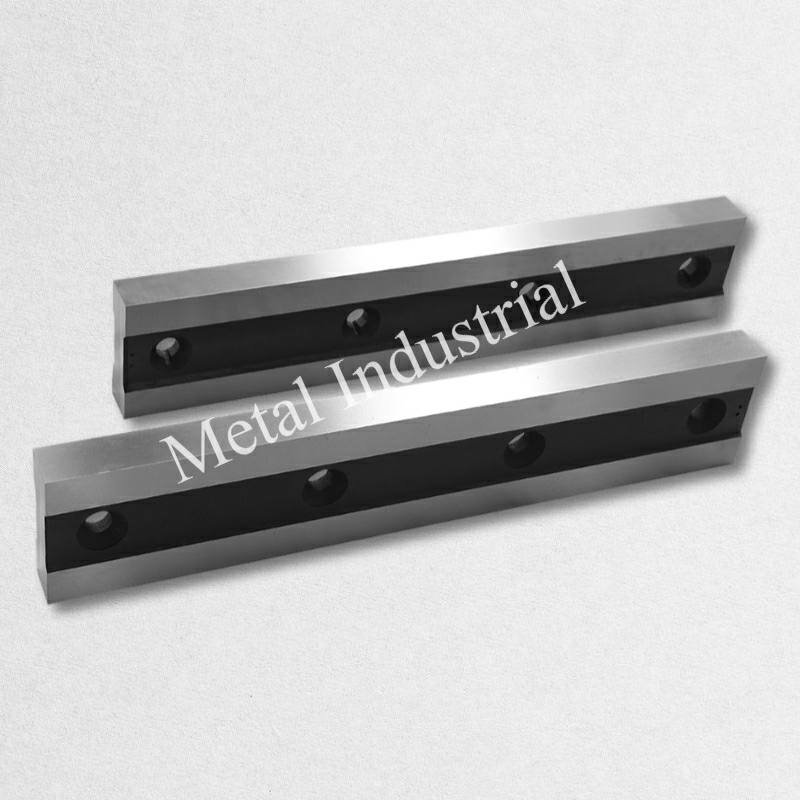
Правильная регулировка лезвий обеспечивает плавную и безопасную работу вашего станка. Для достижения наилучших результатов необходимо проверить и отрегулировать зазор, силу резания и выравнивание. В этом разделе вы найдете подробные инструкции по каждому этапу.
Зазор лезвия
Пошаговый процесс корректировки
Для обеспечения чистого реза и защиты оборудования необходимо установить правильный зазор между лезвиями. Чтобы отрегулировать зазор, выполните следующие действия:
- Выключите машину и убедитесь, что она не может запуститься.
- Поверните ключ в положение регулировки.
- Ослабьте фиксирующее устройство, удерживающее зазор лезвия.
- Установите зазор в зависимости от толщины металла. Для измерения зазора используйте щуп или прокладки.
- Зазор должен составлять примерно от 5% до 10% толщины материала.
- Снова заблокируйте устройство, чтобы сохранить настройку.
- Сделайте пробный надрез и проверьте кромку. Отрегулируйте, если заметите заусенцы или шероховатости.
Совет: Всегда используйте щуп для проверки зазора. Этот инструмент поможет вам получить максимально точные результаты.
Рекомендуемые зазоры для различных материалов
Правильный зазор зависит от типа обрабатываемого металла. Воспользуйтесь этой таблицей, чтобы подобрать оптимальную настройку:
| Тип материала | Рекомендуемый зазор (толщина %) |
|---|---|
| Алюминий | 3-5% |
| Мягкая сталь | 5-8% |
| Нержавеющая сталь | 7-10% |
| Высокопрочная сталь | 10-14% |
Слишком большой зазор приведёт к образованию крупных заусенцев и грубых кромок. Если зазор слишком мал, лезвие будет изнашиваться быстрее и может оставлять двойные пропилы. Всегда проверяйте качество реза и при необходимости корректируйте.
Использование прокладок для точной настройки
Иногда требуется совсем немного изменить зазор. Для этого используются прокладки. Поместите тонкие металлические прокладки между лезвием и держателем, чтобы увеличить или уменьшить зазор. Этот метод хорошо подходит при неравномерном износе или при резке особых материалов.
- Используйте прокладки, если щуп показывает, что зазор по всей длине лезвия неравномерен.
- Добавляйте или убирайте прокладки, пока зазор не будет соответствовать желаемому.
- После настройки проверьте всю длину лезвия с помощью калибра.
Примечание: Всегда проверяйте зазор после затяжки болтов. Давление может изменить настройку.
Сила резания
Как отрегулировать силу резания
Сила резания должна соответствовать материалу и состоянию лезвия. Большинство станков позволяют регулировать силу резания с помощью гидравлического или механического привода.
- Проверьте руководство по эксплуатации машины на предмет правильных настроек давления или силы.
- Увеличьте силу для более толстых или твёрдых металлов.
- Уменьшите силу для тонких или мягких металлов.
- Всегда проверяйте на небольшом участке, прежде чем приступать к большой работе.
Острое лезвие требует меньше усилий. Если вы заметили, что машина работает с трудом, проверьте остроту лезвия и отрегулируйте усилие.
Факторы, влияющие на настройки силы резания
На необходимое количество силы влияет множество факторов:
- Твердость лезвия: более твердые лезвия служат дольше и режут лучше, но требуют правильного усилия.
- Острота лезвий: Острые лезвия режут легче и требуют меньшего давления.
- Твердость материала: для более твердых металлов требуется большее усилие.
- Размер и форма лезвия: более толстые лезвия требуют больше усилий, но служат дольше.
- Техническое обслуживание: чистые и ухоженные лезвия работают лучше и требуют меньше усилий.
В металлообрабатывающей мастерской, где повысилась твёрдость и улучшилось обслуживание лезвий, количество замен сократилось на 45%, что позволило сэкономить $12 000. Другой завод по переработке увеличил скорость работы на 20% и сократил расходы на 35% после перехода на более твёрдые лезвия. Эти результаты показывают, что хороший уход и правильные настройки экономят деньги и повышают производительность труда.
Выравнивание
Процедура выравнивания
Правильное выравнивание обеспечивает ровные пропилы и безопасность станка. Для правильного выравнивания и калибровки выполните следующие действия:
- Выключите машину и заблокируйте ее.
- Используйте линейку или точный инструмент, чтобы проверить параллельность лезвий.
- Отрегулируйте держатели лезвий так, чтобы оба лезвия располагались равномерно от начала до конца.
- Используйте угольник, чтобы проверить, что лезвия расположены под прямым углом к столу.
- Равномерно затяните все болты, переходя от одного конца к другому.
- После затяжки еще раз проверьте выравнивание.
- Выполните тестовый рез и проверьте кромку на наличие двойных линий и заусенцев.
Автоматизированные системы помогают поддерживать точность центровки. Мониторы в реальном времени выявляют проблемы на ранней стадии, позволяя устранить их до того, как они приведут к серьёзным проблемам. Регулярная калибровка и профилактические проверки позволяют поддерживать работу вашего оборудования в безопасных пределах.
Примечание: Неправильное выравнивание может снизить прочность и качество реза на величину до 30%. Всегда проверяйте выравнивание перед началом новой работы.
Распространенные ошибки выравнивания и пути их решения
Многие совершают одни и те же ошибки при настройке выравнивания. Вот некоторые из них, на которые стоит обратить внимание:
- Неравномерная затяжка: если сначала затянуть болты с одной стороны, лезвие может перекоситься. Всегда затягивайте болты небольшими шагами, двигаясь из стороны в сторону.
- Неправильные показания приборов: дважды проверьте свои инструменты и измерения. Небольшая ошибка может привести к серьёзным проблемам.
- Пропуск калибровки: если вы не проверяете выравнивание часто, вы можете пропустить небольшие смещения, которые приведут к плохим резам.
- Игнорирование обратной связи: если вы видите заусенцы или слышите странные звуки, немедленно остановитесь и проверьте выравнивание.
Чтобы исправить эти проблемы:
- Равномерно затяните болты с помощью динамометрического ключа.
- Калибруйте инструменты перед каждым использованием.
- Составьте график регулярных проверок развал-схождения.
- Прислушивайтесь к своей машине и регулярно осматривайте пропилы.
Совет: Качественное выравнивание и калибровка предотвращают появление таких дефектов, как двойные сколы и заусенцы. Они также обеспечивают безопасность станка и высокое качество работы.
Шлифовка и заточка
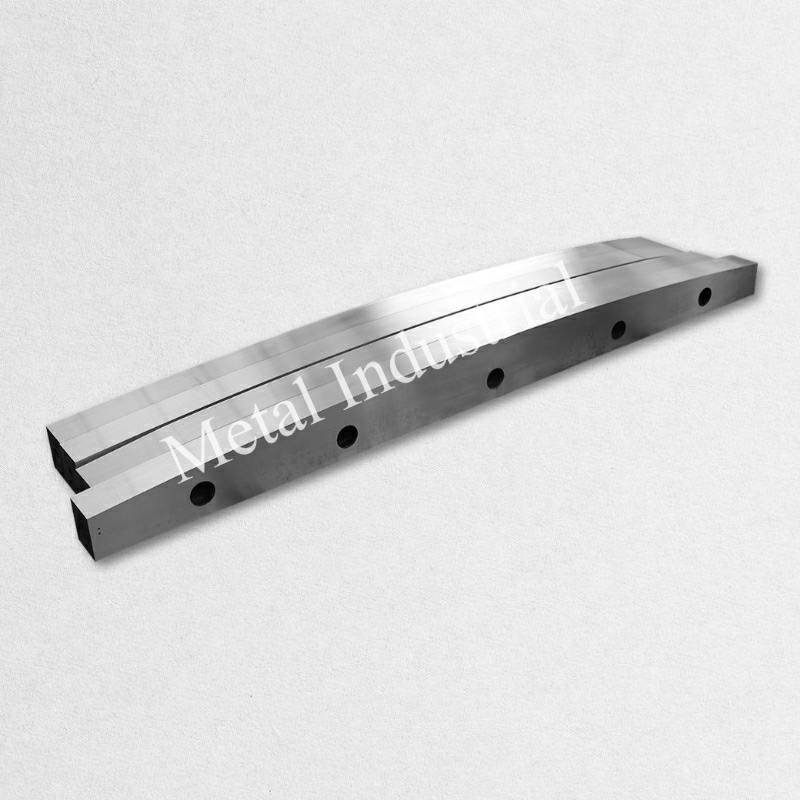
Когда шлифовать
Вам нужно знать, когда лезвие нуждается в заточке. Тупость — главный признак. Если вы видите грубые края или заусенцы на ваших срезах, ваше лезвие, вероятно, затупилось. Вы также можете заметить, что вам нужно прикладывать больше усилий для резки металла. Это дополнительное усилие означает, что затупилось. Всегда проверяйте на наличие зазубрин, неравномерного износа или любых изменений в качестве реза. Это явные признаки затупления.
Вам следует часто проверять лезвие. Обращайте внимание на видимую затупленность, сколы или заусенцы. Ведите журнал каждой проверки. Это поможет вам обнаружить закономерности затупления и спланировать лучшее время для заточки. Если вы используете лезвие каждый день, затупление может появиться быстро. Поворачивайте лезвия, чтобы распределить износ. Этот простой шаг помогает уменьшить затупление и дольше сохраняет лезвие острым.
Совет: используйте неразрушающие тесты, такие как ультразвуковое сканирование, чтобы обнаружить скрытые дефекты. Это поможет вам избежать внезапного отказа лезвия, вызванного глубокой затупленностью или трещинами.
Правильные методы
Правильная заточка лезвия очень важна. Если вы затачиваете слишком много, вы можете ослабить лезвие. Если вы затачиваете слишком мало, затупление останется, и ваши разрезы не улучшатся. Всегда используйте прецизионный заточной станок. Этот инструмент сохраняет правильный угол кромки и равномерно удаляет затупление.
Для безопасного и эффективного шлифования выполните следующие действия:
- Очистите лезвие перед заточкой. Грязь может привести к неравномерной заточке и скрыть затупление.
- Установите заточной станок на угол, рекомендованный производителем. Это сохранит лезвие прочным и острым.
- Шлифуйте медленно и часто проверяйте кромку. Остановитесь, если увидите какие-либо признаки перегрева, так как это может привести к более быстрому возвращению затупления.
- Используйте охлаждающие жидкости во время шлифования. Это предотвращает накопление тепла и защищает лезвие от повторного затупления.
- После заточки осмотрите лезвие на предмет оставшихся затуплений или неровностей.
Автоматизированные системы заточки помогут вам избежать человеческих ошибок. Эти машины поддерживают идеальный угол кромки и могут увеличить срок службы лезвия до 20%. Всегда следуйте рекомендациям производителя по скорости и углу заточки. Это снижает затупление и обеспечивает безопасность вашего лезвия.
Примечание: Никогда не перегружайте лезвие, разрезая слишком твердые или толстые материалы. Это приводит к затуплению и сокращает срок службы лезвия.
После заточки храните лезвие в сухом и безопасном месте. Хорошее хранение предотвращает повторное затупление из-за ржавчины или повреждения. Регулярная шлифовка и заточка предотвращают затупление и помогают вам каждый раз получать чистые и безопасные разрезы.
Безопасное обращение и хранение

Процедуры обработки
Вам нужно быть осторожным, перемещая лезвия ножниц для металлолома. Эти лезвия острые и тяжелые, поэтому безопасность очень важна. Всегда надевайте правильную защитную экипировку. Перчатки защищают ваши руки от порезов. Защитные очки защищают ваши глаза от летящих металлических кусков. Ботинки и каски помогают защитить ваши ноги и голову в оживленных местах.
- Всегда используйте перчатки, защитные очки, сапоги и каски когда вы касаетесь лезвий.
- Не прикасайтесь к острому краю. Держите лезвие за бока или используйте специальные инструменты, чтобы поднять его.
- Содержите рабочее место в порядке. Собирайте лом и инструменты, чтобы не споткнуться и не поскользнуться.
- Перед чисткой или ремонтом машины выполните шаги по блокировке/маркировке. Это предотвратит случайное включение машины.
- Используйте защитные ограждения и щитки на машинах. Они защитят вас от движущихся частей и острых краев.
- Только обученные работники должны перемещать или устанавливать лезвия. Обучение научит вас правильно поднимать и переносить лезвия.
- Разместите предупреждающие знаки и обозначьте безопасные зоны вокруг машин. Это поможет уберечь необученных людей от опасности.
- Проверьте лезвия перед использованием. Проверьте наличие трещин, сколов или тупых пятен. Немедленно замените поврежденные лезвия, чтобы предотвратить несчастные случаи.
Совет: Использование машин, сортирующих лом, поможет вам меньше прикасаться к острым лезвиям. Это сделает его более безопасным для вас.
Частая очистка лезвий и их быстрая замена также делают вашу рабочую зону более безопасной. Чистые лезвия работают лучше и реже заклинивают или внезапно ломаются.
Условия хранения
Правильное хранение лезвий сохраняет их прочность и предотвращает появление ржавчины или повреждений. Всегда храните лезвия в сухом, прохладном месте. Влажный воздух вызывает ржавчину, которая может ослабить лезвия и сократить срок их службы.
- Кладите лезвия на полки или стеллажи, а не на землю. Не кладите их на бетонный пол, так как бетон удерживает воду.
- Храните лезвия в помещении с низкой влажностью. При необходимости используйте вентиляторы или осушители воздуха.
- Полностью высушите лезвия после чистки, прежде чем убрать их на хранение. Любая оставшаяся вода может вызвать ржавчину.
- Нанесите тонкий слой масла или средства против ржавчины на лезвие перед тем, как убрать его на хранение. Это обеспечит дополнительную защиту.
- Используйте пакеты с силикагелем или материалы, впитывающие воду, в контейнерах для хранения, чтобы воздух оставался сухим.
- Накройте лезвия чехлами или футлярами. Это предотвратит попадание пыли и защитит их от ударов.
- Держите лезвия вдали от химикатов и веществ, которые могут вызвать ржавчину.
- Часто проверяйте хранящиеся лезвия. Ищите ржавчину или повреждения и немедленно устраняйте проблемы.
Примечание: Правильное хранение лезвий и их смазывание часто помогает им служить дольше и работать лучше. Чистые, сухие и защищенные лезвия всегда готовы и безопасны для использования.
Устранение неисправностей лезвий ножниц Metal
При использовании ножниц для резки металла у вас могут возникнуть проблемы. Это может быть затупление, сколы, несоосность или вибрация. Устранение этих проблем обеспечивает безопасность вашего станка. Это также помогает вам делать чистые разрезы. Вы можете использовать простые шаги и простые инструменты, чтобы быстро устранить большинство проблем.
Тусклость и сколы
Тупость делает лезвие плохо режущим. Вы можете увидеть грубые края или вам нужно будет приложить больше усилий для резки. Сколы возникают, когда от кромки лезвия отламываются небольшие кусочки. Обе проблемы замедляют работу и могут повредить вашу машину.
Чтобы устранить затупление, проверяйте лезвие каждый день. Очищайте его и ищите признаки износа. Если вы видите затупление, заточите или замените лезвие. Всегда используйте правильное лезвие для каждой работы. Это помогает предотвратить слишком раннее затупление и сколы. Часто смазывайте лезвие маслом. Смазки на основе ПТФЭ могут снизить трение до 55%. Они также могут продлить срок службы лезвия 40%.
Вот простая таблица, которая поможет вам запомнить, что делать:
| Проблема | Действия по устранению неполадок |
|---|---|
| Тупость | Заточите или замените лезвие; чистите ежедневно |
| Сколы | Используйте правильное лезвие; отрегулируйте силу; смажьте |
Совет: чистите лезвие каждый день и часто затачивайте его. Это может продлить срок службы лезвия 25–35%. Это также облегчит устранение затупления.
Проблемы с несоосностью
Несоосность делает резы неровными и шумными. Вы можете увидеть, что ваши детали не подходят по размеру. Чтобы исправить несоосность, проверяйте лезвия каждую неделю. Используйте калибровочный зонд или лазерный сканер для измерения положения лезвия. Эти инструменты могут обнаружить очень маленькие ошибки, даже 0,1 мм.
Записывайте любые изменения, которые вы делаете, в журнал. Это поможет вам увидеть закономерности и отслеживать исправления. Если вы обнаружите несоосность, следуйте инструкциям, чтобы исправить ее. Используйте линейку и угольник, чтобы проверить лезвие. Равномерно затяните болты и проверьте еще раз. Хорошее выравнивание обеспечивает ровные разрезы и безопасность машины.
Примечание: проверка несоосности каждую неделю помогает обнаружить проблемы на ранней стадии. Это останавливает вибрацию и ошибки резки до того, как они станут хуже.
Вибрация и шум
Вибрация и шум означают, что с вашим лезвием или машиной что-то не так. Начните с осмотра разрезов. Неровные разрезы, заусенцы или громкие звуки могут означать затупление или несоосность.
Проверьте лезвие на предмет износа или повреждения. Убедитесь, что лезвие выровнено правильно, а болты затянуты. Используйте датчик смещения для проверки положения лезвия. Если вы обнаружите проблему, немедленно устраните ее. Чистка и смазка лезвия также могут помочь остановить вибрацию. Проводите полную проверку технического обслуживания каждый месяц. Это поможет вам обнаружить скрытые проблемы и устранить их.
Выноска: Раннее устранение вибрации может предотвратить повреждение машины. Это также обеспечивает безопасность вашей работы.
Если вы будете следовать этим шагам, вы сможете быстро устранить большинство проблем с лезвиями. Ежедневные, еженедельные и ежемесячные проверки сохранят ваши лезвия острыми, безопасными и готовыми к использованию.
Критерии замены лезвий
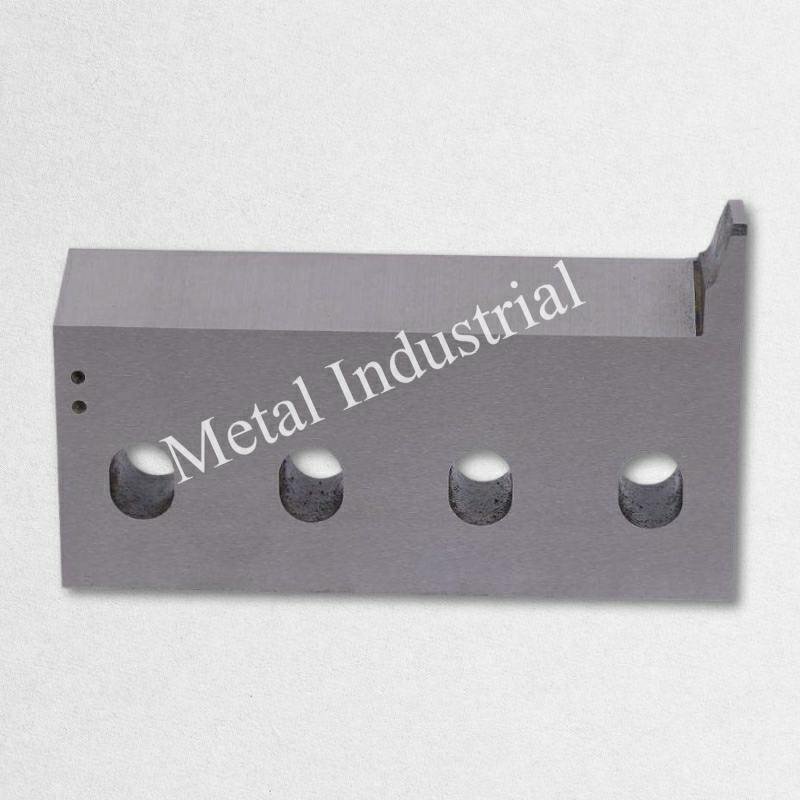
Вам нужно знать, когда менять лезвия ножниц. Это обеспечивает безопасность вашей машины и качество вашей работы. Следите за признаками, которые указывают на то, что пора заменить лезвие. Если вы пропустите эти признаки, ваша машина может выйти из строя. Вы или другие также можете пострадать.
Знаки для замены
Обратите внимание на следующие признаки, указывающие на необходимость замены лезвия:
Видимые трещины или сколы
Проверьте лезвия на наличие трещин или сколов. Даже небольшие трещины могут быстро увеличиваться. Сколы на кромке делают резы грубыми и негладкими. Если вы видите трещины или сколы, немедленно замените лезвие. Использование сломанного лезвия может привести к его поломке во время использования.
Чрезмерный износ, превышающий допустимые нормы
Часто измеряйте лезвия, чтобы проверить их толщину. Если лезвие слишком тонкое, вам нужно новое. Изношенные лезвия плохо режут. Они также усложняют работу вашего станка. Всегда используйте правила толщины от производителя.
Плохое качество резки (заусенцы, грубые края)
Посмотрите на свои порезы. Если вы видите заусенцы или грубые края, ваше лезвие может быть тупым. Плохие порезы означают, что лезвие не острое. Это явный признак того, что вам нужно новое лезвие.
Частое заклинивание или повышенное сопротивление резанию
Обратите внимание, если ваша машина часто застревает или ею трудно пользоваться. Необходимость большего усилия означает, что лезвие работает неправильно. Это может повредить вашу машину. Не ждите — замените лезвие как можно скорее.
Деформация или искривление лезвия
Проверьте форму вашего лезвия. Если оно изогнуто или перекручено, оно не может резать прямо. Деформированные лезвия также могут привести к неправильной настройке машины. Замените любое лезвие, которое имеет неправильную форму.
Необычные шумы во время работы
Прислушивайтесь к странным звукам при использовании ножниц. Скрипы, скрежет или стук могут означать, что лезвие сломано или ослаблено. Эти звуки являются предупреждениями. Остановите машину и проверьте ее на наличие повреждений. Если вы обнаружили проблему, немедленно купите новое лезвие.
Совет: записывайте каждый раз, когда вы проверяете или меняете лезвие. Это поможет вам узнать, как долго служат лезвия, и выявить проблемы на ранней стадии.
Риски задержки
Слишком долгое ожидание замены лезвий рискованно. Промедление может привести к проблемам безопасности, повреждению машины и стоить больше денег.
Повышенная опасность (травмы оператора)
Старые или сломанные лезвия могут внезапно сломаться. Острые осколки могут разлететься и ранить людей. Быстрая смена лезвий обеспечивает всем большую безопасность.
Потенциальное повреждение машины (перекос, перегрузка)
Изношенное или погнутое лезвие может привести к неправильной установке машины. Это создает дополнительную нагрузку на движущиеся части. Со временем это может привести к поломке деталей или всей машины. Своевременная замена лезвий защищает ваше оборудование.
Снижение качества резки и эффективности производства
Если вы используете тупое или сломанное лезвие, ваши разрезы будут выглядеть плохо. Возможно, вам придется переделывать работу или выбрасывать отходы. Это замедляет работу и тратит материал впустую. Быстрая смена лезвий обеспечивает гладкость работы.
Более высокие затраты на долгосрочное обслуживание
Ожидание замены лезвий может усугубить мелкие проблемы. Возможно, вам придется ремонтировать не только лезвие. Более частый ремонт стоит больше денег и занимает больше времени. Своевременная замена лезвий экономит деньги.
Риск полного выхода из строя лезвия во время эксплуатации
Если вы проигнорируете все признаки, лезвие может сломаться полностью. Это может остановить вашу машину и быть очень опасным. Вам может понадобиться экстренный ремонт или новая машина. Избегайте этого, планируя регулярную замену лезвий.
| Риск задержки | Что может случиться | Как это предотвратить |
|---|---|---|
| Травма оператора | Порезы, разлетающийся металл, серьезные аварии | Своевременная замена лезвий |
| Повреждение машины | Несоосность, сломанные детали, простои | Осмотрите и замените как можно скорее |
| Плохое качество резки | Заусенцы, грубые края, отходы материала | Используйте острые лезвия |
| Высокие затраты на техническое обслуживание | Больше ремонтов, больше простоев | График замен |
| Полный отказ лезвия | Машина останавливается, требуется экстренный ремонт | Следите за предупреждающими знаками |
Примечание: Вы обеспечиваете безопасность своей команды и машины, когда быстро меняете лезвия. Не ждите, пока случится большая проблема.
Замена лезвий ножниц Metal
Замена вашего лезвия для резки металлолома сохраняет вашу машину безопасной, а ваши разрезы чистыми. Вам нужно следовать правильным шагам, чтобы избежать травм и убедиться, что ваша машина работает хорошо после замены. Хорошая подготовка, аккуратная замена и правильная калибровка помогут вам получить наилучшие результаты.
Подготовительные этапы
Начните с подготовки рабочего места. Выключите машину и заблокируйте ее, чтобы она не могла запуститься случайно. Соберите все необходимые инструменты, такие как гаечные ключи, отвертки и защитные перчатки. Наденьте защитные очки и перчатки, чтобы защитить руки и глаза. Очистите область вокруг лезвия. Удалите все металлические отходы или масло. Это поможет вам видеть, что вы делаете, и обеспечит вашу безопасность.
Проверьте новое лезвие перед установкой. Проверьте на наличие трещин, сколов или ржавчины. Убедитесь, что лезвие соответствует размеру и форме вашей машины. Прочитайте руководство по эксплуатации машины, чтобы узнать о специальных инструкциях по замене лезвия. Если вы выполните эти шаги, вы снизите риск ошибок.
Процесс замены
Теперь вы можете начать замену. Используйте правильные инструменты, чтобы ослабить болты или крепежи, которые удерживают старое лезвие. Осторожно снимите лезвие. Держите руки подальше от острого края. Положите старое лезвие в безопасное место, чтобы никто не поранился.
Установите новое лезвие в правильное положение. Убедитесь, что оно совпадает с фиксированным лезвием. Вставьте болты и затяните их сначала вручную. Используйте гаечный ключ, чтобы немного затянуть каждый болт за раз, двигаясь от одного конца к другому. Это удерживает лезвие прямо и помогает с выравниванием и калибровкой. Не затягивайте болты слишком сильно. Убедитесь, что лезвие сидит ровно и не шатается.
Совет: Всегда используйте тот же тип болтов и шайб, что и оригинальные. Это надежно фиксирует лезвие и помогает в калибровке.
Проверки после замены
После того, как вы закончите замену, вам нужно проверить свою работу. Сначала посмотрите на лезвие и убедитесь, что оно стоит прямо. Используйте щуп, чтобы проверить зазор между лезвиями. При необходимости отрегулируйте зазор. Этот шаг называется калибровкой. Хорошая калибровка обеспечивает гладкие разрезы и защищает вашу машину.
Выполните тестовый рез с небольшим куском металлолома. Следите за заусенцами, грубыми краями или странными звуками. Если вы видите какие-либо проблемы, остановитесь и проверьте положение лезвия. Повторяйте процесс калибровки, пока разрезы не будут выглядеть чистыми. Запишите дату замены и калибровки в журнале технического обслуживания. Это поможет вам отслеживать срок службы лезвия и планировать будущие замены.
Примечание: Регулярная калибровка после каждой замены обеспечивает безопасность вашего станка и точность реза.
Индивидуальные ножницы Metal
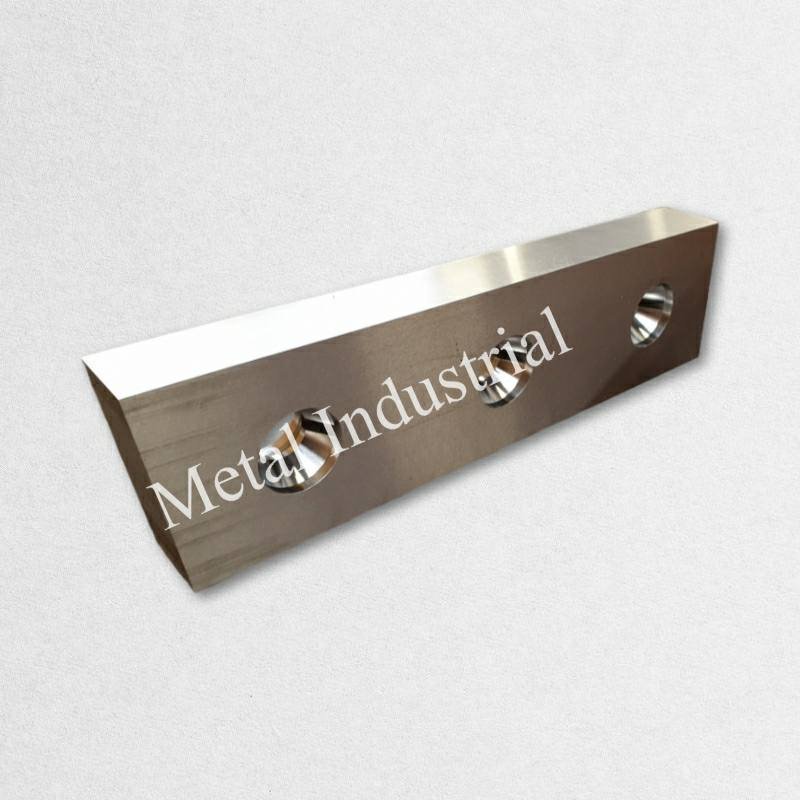
Преимущества индивидуальных лезвий
Вы можете получить лучшие результаты, используя индивидуальные лезвия для резки металла. Индивидуальные лезвия точно подходят к вашему станку и вашим материалам. Это означает, что вы получаете более чистые разрезы, меньше отходов и более длительный срок службы лезвия. Вы также тратите меньше времени на устранение неполадок или замену лезвий.
Ниже представлена таблица, в которой показано, как индивидуальные лезвия сравниваются со стандартными:
| Метрическая | Стандартные лезвия | Индивидуальные/высококачественные лезвия | Финансовое воздействие/выгода |
|---|---|---|---|
| Срок службы лезвия | 3 месяца | 9 месяцев | Меньше замен, меньше затрат |
| Время простоя (ежемесячно) | 20 часов | 10 часов | 50% меньше простоев, $80,000 больше производительности/год |
| Материальные отходы | 5% из общего количества | 2% из общего количества | $150,000 сэкономлено каждый год |
| Расходы на техническое обслуживание | $30,000/год | $15,000/год | $15,000 сэкономлено на обслуживании |
Индивидуальные лезвия также могут вам помочь:
- Сократите время цикла на 20%, чтобы вы могли производить больше продукции каждый месяц.
- Увеличьте скорость производства до 25%.
- Снизьте процент брака, что означает меньше некачественных деталей.
- Продлите срок службы своих изделий, например, аккумуляторов, выполняя более чистые разрезы.
Использование специальных лезвий поможет вам сэкономить деньги, работать быстрее и получать лучшее качество каждый день.
Когда необходима настройка
Если обычные лезвия вам не подходят, стоит задуматься о специальных лезвиях. Если у вас особые материалы, сложная работа или требуется очень точная резка, специальные лезвия подойдут лучше. Вот несколько признаков того, что вам нужно индивидуальное решение:
- Ваши нынешние лезвия не подходят для вашего станка или вашей работы.
- Вам нужна особая форма, размер или покрытие для вашего лезвия.
- В вашей работе используются труднообрабатываемые материалы или требуются очень ровные края.
- Вы хотите сократить отходы и сэкономить деньги.
- Вам необходимо соблюдать строгие правила безопасности и качества.
Процесс получения изготовленное на заказ лезвие обычно выглядит так:
- Вы отправляете образец или чертеж того, что вам нужно.
- Производитель проектирует и чертит лезвие для вас.
- Вы проверяете и утверждаете дизайн, прежде чем его начнут реализовывать.
Для изготовления лезвий на заказ используются высококачественные инструментальные стали, нержавеющие стали или карбид вольфрама. Эти материалы соответствуют вашим задачам и служат дольше. Многие отрасли, такие как аэрокосмическая, автомобильная и медицинская, используют лезвия на заказ для своих особых нужд.
Примечание: Специальные лезвия помогут вам решить проблемы, с которыми не справятся стандартные лезвия. Они дают вам больше контроля над работой.
Обзор Нанкина Metal
Если вам нужен надежный производитель лезвий на заказ, компания Nanjing Metal — ваш лучший выбор. Эта компания имеет 20-летний опыт производства промышленных лезвий для самых разных задач. Их опытная команда проектирует и изготавливает лезвия, которые точно соответствуют вашим потребностям.
Нанкин Metal Использует передовые покрытия, такие как нитрид титана (TiN) и карбонитрид титана (TiCN). Эти покрытия продлевают срок службы лезвий до 40% и сокращают время обслуживания до 30%. Компания имеет отличную репутацию в области качества и тесно сотрудничает с клиентами из сферы производства аккумуляторов, переработки и других отраслей. Их индивидуальные решения помогут вам добиться реза без заусенцев, снижения количества дефектов и повышения безопасности продукции.
Вы можете быть уверены, что Nanjing Metal поставит лезвия, подходящие вашему станку и вашим задачам. Компания уделяет особое внимание качеству, быстрому обслуживанию и удовлетворенности клиентов. Если вы хотите узнать больше или вам нужен индивидуальный лезвие, вы можете Контакты своему инженеру по продажам за помощью.
Контрольный список по техническому обслуживанию ножниц

Краткий справочник
Вы можете поддерживать свои ножницы по металлу в рабочем состоянии, используя простой контрольный список. Это краткое руководство поможет вам запомнить каждый важный этап. Используйте его каждый день и каждую неделю для обеспечения безопасности и бесперебойной работы.
🛠️ Ежедневный контрольный список
- Очистите машину. Удалите пыль, металлические частицы и грязь со всех деталей.
- Проверьте лезвия на остроту, наличие трещин и сколов. Убедитесь, что каждое лезвие находится на своём месте.
- Смажьте все движущиеся части, такие как направляющие лезвий и салазки.
- Проверьте гидравлическую и воздушную системы на наличие утечек или повреждений.
- Убедитесь, что защитные ограждения установлены и установлены правильно.
- Проверьте работу кнопок аварийной остановки.
Совет: Всегда выключайте машину перед чисткой, проверкой или ремонтом чего-либо.
📅 Еженедельный контрольный список
- Смажьте подшипники и шестерни.
- Проверьте уровень гидравлического масла. Обратите внимание на наличие загрязнений и утечек в шлангах.
- Проверьте надежность крепления электрических проводов и отсутствие повреждений.
- Проверьте, ровно ли расположено лезвие и остро ли оно.
- Откалибруйте задний упор и убедитесь, что он движется плавно.
- Очистите масляную и воздушную системы.
📝 Регулярное техническое обслуживание и безопасность
| Задача | Как часто | Что делать |
|---|---|---|
| Осмотр лезвий | Ежедневно/Еженедельно | Проверьте на наличие износа, трещин или тусклых краев. |
| Проверка гидравлической жидкости | Еженедельно | При необходимости добавьте или замените жидкость. |
| Проверка электрической системы | Еженедельно | Затяните и проверьте все провода. |
| Обучение операторов | Непрерывный | Научите безопасному использованию и действиям в чрезвычайных ситуациях |
| Регистрируйте все проверки | Каждый раз | Запишите, что вы нашли и исправили. |
- Всегда принимайте меры по блокировке/опломбированию оборудования перед тем, как что-либо ремонтировать или менять.
- Никогда не подставляйте руки под острые или движущиеся части.
- Используйте правильные инструменты для острых лезвий и лома.
- Используйте защитные очки, перчатки, сапоги и средства защиты органов слуха.
- Соберите длинные волосы и не надевайте одежду слишком плотно.
Примечание: Хороший контрольный список поможет вам обнаружить проблемы на ранней стадии. Вы сможете предотвратить аварии и продлить срок службы своей техники.
🚨 Контрольный список действий в чрезвычайных ситуациях и устранения неполадок
- Знайте, где находятся кнопки аварийной остановки, и регулярно проверяйте их.
- Прежде чем что-либо ремонтировать, соблюдайте правила блокировки и маркировки.
- Если вы заметили утечки, услышали странные звуки или получили серьезные порезы, остановитесь и проверьте машину.
- Немедленно устраняйте любые повреждения, чтобы ситуация не ухудшилась.
Примечание: ежедневное использование контрольного списка по устранению неисправностей обеспечит вашу безопасность и поможет сэкономить деньги на ремонте.
Часто задаваемые вопросы
Как часто следует проверять лезвия ножниц по металлу?
Проверяйте лезвия каждый день перед началом работы. Обращайте внимание на трещины, сколы и затупленные края. Ежедневные проверки помогут вам своевременно обнаружить проблемы и обеспечить безопасность вашего инструмента.
Как лучше всего чистить лезвия для резки металла?
Протирайте лезвия мягкой тканью после каждого использования. Для удаления стойких загрязнений используйте изопропиловый спирт или мягкое чистящее средство. Всегда тщательно просушивайте лезвия, чтобы предотвратить появление ржавчины.
Как узнать, когда пора менять лезвие?
Обращайте внимание на трещины, сколы или грубые срезы. Если вы видите заусенцы или лезвие кажется тупым, его пора заменить. Измерьте толщину и сравните её с инструкцией производителя.
Можно ли заточить тупое лезвие или его всегда следует менять?
Тупое лезвие можно заточить, если на нём нет глубоких трещин и сколов. Используйте заточной станок, соблюдая правильный угол заточки. Если заточка не решила проблему, замените лезвие.
Какой самый безопасный способ обращения с лезвиями и их хранения?
Всегда надевайте перчатки и защитные очки. Держите лезвия за боковые стороны, а не за край. Храните лезвия в сухом месте на стойках или полках. Для защиты лезвий используйте масло или антикоррозийные средства.
Почему выравнивание лезвий имеет значение для качества резки?
Правильное выравнивание обеспечивает ровные и чистые разрезы. Неправильное выравнивание приводит к появлению заусенцев, шероховатостей и может повредить станок. Регулярно проверяйте выравнивание с помощью поверочной линейки или угольника.
Где можно приобрести промышленные лезвия, изготовленные на заказ для особых работ?
Вы можете заказать лезвия по индивидуальному заказу у проверенного производителя. Компания Nanjing Metal имеет 20-летний опыт профессионального производства лезвий. Их команда проектирует и изготавливает лезвия, отвечающие вашим потребностям.


